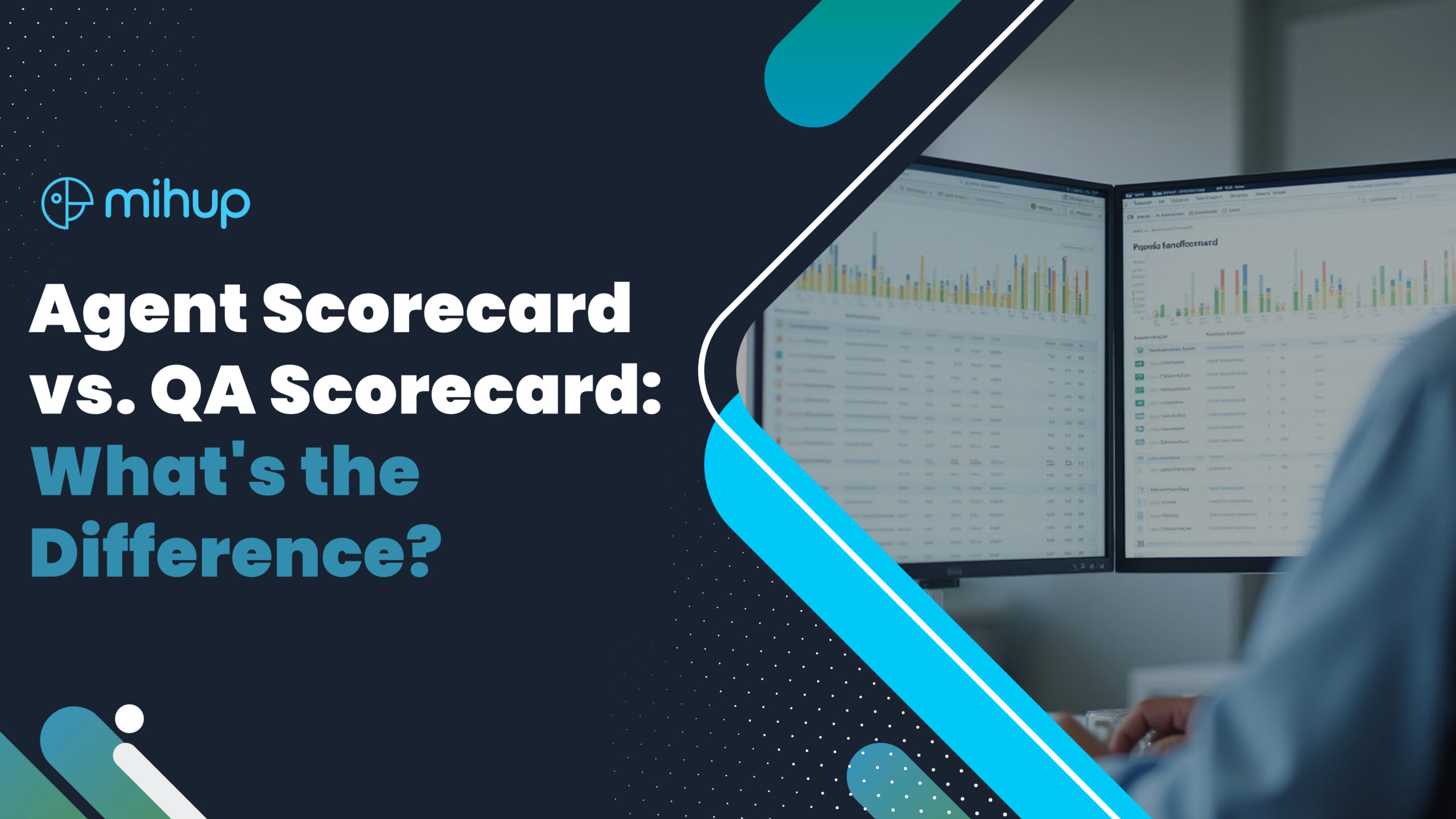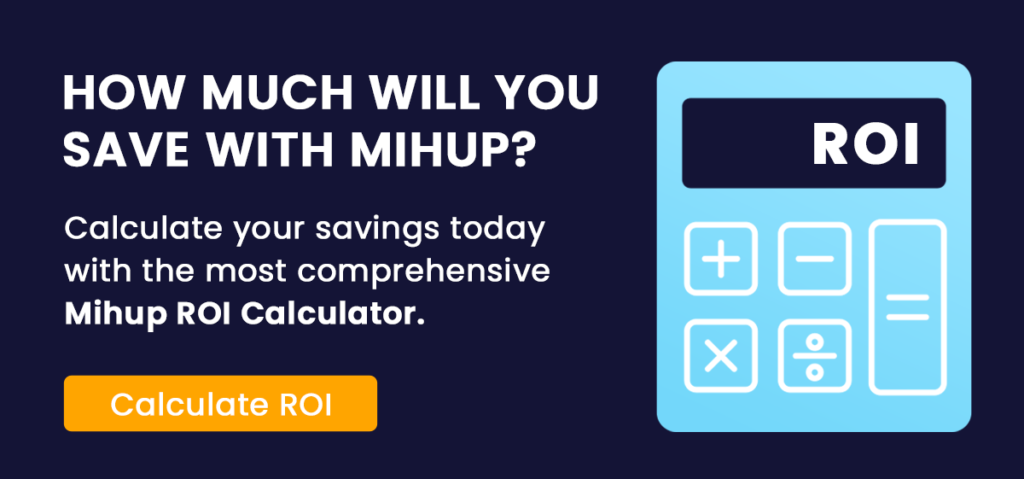If you want to make a call center work better, the most important thing is to make tests that measure the performance of employees really work; one can use Agent Scorecards and QA Scorecards as the most important tools. Indeed, while at first sight, the Agent Scorecards and QA Scorecards look similar, maybe even identical ( they are both scorecards), they are, in fact, quite different in what is being measured and in how they can contribute to the improvement of call center performance.
Agent Scorecards are quantitatively oriented and help in finding an agent’s development point. AHT, FCR, and CSAT are some of the quantitative KPIs that an agent is rated on in the scorecard. These scorecards are some kind of torch for the agents – they give them the direction of where to aim, and motivate them to attain the goals.
Unlike the above-mentioned result, QA Scorecards basically rate the quality (or usually the quality of the interaction) of the customer service provided, often starting with the analysis of the courtesy of the agent when speaking to the client, helping the customer, or solving the problem, and getting customer permission/compliance. According to the study, quality assurance (QA) scorecards have been identified as a measure that is capable of reducing the number of customers who make repeated calls by 20% and, consequently, supporting the quality assurance team that this department requires by 30%.
In this article, you’ll discover:
- The core components of Agent and QA scorecards
- Key differences in their evaluation approaches
- Best practices for implementing both scoring systems
- How technology enhances scoring processes
- Ways to leverage these tools for improved call center performance.
Understanding the Agent Scorecard: Driving Measurable Performance
An Agent Scorecard focuses on tracking individual agent performance using quantitative KPIs. These metrics give agents clear benchmarks for success and help managers identify strengths and improvement areas.
Key Metrics Tracked in Agent Scorecards:
- Average Handle Time (AHT)
- First Call Resolution (FCR)
- Customer Satisfaction (CSAT) scores
- Adherence to schedule
- Call transfer rate
These KPIs serve multiple purposes:
- Performance Monitoring: Offers real-time insights into agent productivity
- Goal Setting: Provides a foundation for setting achievable performance targets
- Incentivization: Supports performance-based rewards and recognition
By aligning individual goals with business outcomes, the Agent Scorecard becomes a motivational tool that fosters accountability.
Exploring the QA Scorecard: Ensuring Quality and Compliance
A QA Scorecard, or Quality Assurance Scorecard, evaluates the quality of customer interactions. Unlike the data-heavy Agent Scorecard, QA Scorecards emphasize soft skills, call compliance, and communication effectiveness.
Core Elements of QA Scorecards:
- Call opening and closing etiquette
- Empathy and tone of voice
- Accuracy in information delivery
- Problem-solving effectiveness
- Compliance with scripts and regulatory standards
Benefits of QA Scorecards:
- Reduced Repeat Calls: Up to 20% fewer repeat calls through improved interaction quality
- Faster QA Processes: Up to 30% time savings through streamlined evaluations
- Targeted Coaching: Identification of skill gaps and training opportunities
The QA Scorecard focuses on the how of an interaction, providing valuable insights into customer experience and service consistency.
Agent Scorecard vs. QA Scorecard: Core Differences
Agent scorecards and QA scorecards serve distinct functions in call center operations. Agent scorecards primarily track individual performance metrics and KPIs, while QA scorecards evaluate the quality of customer interactions and compliance adherence.
Key Differences in Purpose:
| Feature | Agent Scorecard | QA Scorecard |
| Focus Area | Productivity and KPIs | Interaction Quality & Compliance |
| Primary Use | Track metrics like AHT, FCR, and CSAT | Evaluate tone, empathy, and policy adherence |
| Data Type | Quantitative | Qualitative |
| Audience | Agents & Supervisors | QA Analysts & Coaches |
| Purpose | Benchmarking & Incentives | Coaching & Quality Control |
A QA scorecard examines the nuanced aspects of customer interactions, including proper call opening procedures, problem-solving approaches, and adherence to compliance requirements. These scorecards reduce repeat calls by up to 20% through systematic evaluation of agent-customer dialogues.
Agent scorecards, by contrast, concentrate on measurable outcomes such as Average Handle Time (AHT), First Call Resolution (FCR), and Customer Satisfaction (CSAT) scores. This data-driven approach enables managers to identify performance trends and make informed decisions about resource allocation and training needs.
While the Agent Scorecard quantifies efficiency, the QA Scorecard qualifies the customer experience. Together, they provide a 360-degree view of performance.
The Role of Effective Scorecards in Call Centers
Effective scorecards are powerful tools that drive performance excellence in call centers. These measurement tools create a direct link between agent actions and business outcomes, fostering a culture of accountability and continuous improvement.
Agent Accountability & Performance Enhancement
Scorecards provide agents with clear performance expectations and measurable goals. When agents understand exactly how their work is evaluated, they become active participants in their own success. Data shows that well-implemented scorecards lead to:
- 28% faster agent ramp-up time
- Reduced repeat calls by 20%
- Improved first-call resolution rates
- Enhanced compliance adherence
The call center standards ensure that these scorecards are aligned with industry best practices, further driving performance enhancement.
Customer Experience Impact
The benefits of effective scorecards extend directly to customer satisfaction. Research by Qualtrics reveals that 90% of customers value empathy in support interactions – a metric commonly tracked in comprehensive scorecards. Strategic scorecard implementation drives:
- Consistent service delivery across all customer touchpoints
- Higher customer satisfaction scores
- Reduced average handling time without sacrificing quality
- Stronger emotional connections through tracked soft skills
By establishing clear metrics and evaluation criteria, scorecards create a structured framework for excellence. They transform abstract concepts like “good customer service” into tangible, measurable actions that agents can understand and execute consistently.
Choosing Appropriate Scoring Methods and Avoiding Implementation Pitfalls
Selecting the right scoring method shapes the effectiveness of your call center’s quality assurance program. The Yes/No scoring method provides a straightforward approach – agents either meet specific criteria or they don’t. This binary system works well for compliance-related items and essential procedural checks.
The numeric scale scoring method (typically 1-5) offers a more nuanced evaluation of agent performance. This approach captures varying degrees of competency in areas like customer service skills, problem-solving abilities, and communication effectiveness.
Common implementation pitfalls to watch for:
- Overcomplicated scorecards – Keep evaluations focused with 10-15 key points maximum
- Static criteria – Review and update scorecards quarterly to reflect evolving business needs
- Neglecting soft skills – Include metrics for empathy, active listening, and professional tone
- Inconsistent scoring – Regular calibration sessions ensure evaluators maintain uniform standards
- Missing feedback loops – Create space for detailed notes and actionable improvement suggestions
A balanced scoring approach combines different methods based on specific evaluation needs. Critical compliance elements might use Yes/No scoring, while customer interaction quality benefits from scaled ratings. This hybrid model delivers comprehensive performance insights while maintaining scoring efficiency.
Leveraging AI and Automation for Enhanced Scoring Processes
Modern call centers use advanced technology to change their quality assurance processes completely. With the help of AI-powered automation tools, they can now evaluate every single call instead of just a few manually. Platforms like Mihup.ai are redefining quality assurance by automating evaluations and analyzing 100% of customer interactions.
Real-Time Detection of Key Factors
Speech analytics engines can identify important aspects during a conversation as it happens. Here are some of the things they can detect:
- Tone shifts and emotional patterns
- Keywords and compliance phrases
- Silence durations and interruptions
- Customer sentiment indicators
Integration of Automated Scoring Systems with Call Transcription Services
Automated scoring systems work together with call transcription services to create searchable databases of customer interactions. This integration allows for efficient analysis and retrieval of specific call segments.
Benefits Delivered by Advanced Platforms
- Reduced QA Time: Automated scoring cuts evaluation time by up to 30% and helps you drive 20% improvement in QA efficiency
- Comprehensive Analysis: AI evaluates every interaction, not just random samples
- Data-Driven Coaching: Machine learning algorithms identify skill gaps and training needs
- Real-Time Monitoring: Instant alerts for compliance issues or escalation risks
Visualizing Performance Metrics through Custom Dashboards
Custom dashboards visualize performance metrics through intuitive charts and goal-tracking widgets. These visual tools help managers spot trends, identify top performers, and pinpoint areas needing improvement.
Ensuring Consistent Evaluation Standards across Teams
Quality analysts can standardize scoring across teams using collaborative calibration tools, ensuring consistent evaluation standards.
Transforming Raw Interaction Data into Actionable Insights
AI-driven platforms transform raw interaction data into actionable insights using natural language processing and entity recognition models. This technology enables precise performance tracking and personalized coaching recommendations based on actual customer conversations.
Building a Culture of Continuous Improvement
Agent and QA scorecards each play a role in call center operations. Each captures data; agent scorecards track individual KPIs and productivity, while QA scorecards contemplate service quality and compliance with established standards. Together, the agent and QA scorecards provide a much fuller evaluation covering the customer experience and operational effectiveness.
When organizations adopt both scoring frameworks and leverage advanced analytics technology, they will transform unstructured data, features, instrument data, and process details into actionable insights, creating a balanced performance framework for operational improvement. AI-powered software platforms like Mihup.ai can evaluate 100% of customer interactions, provide real-time insight, and manager can use data to work smarter, not harder. Interested in improving efficiency and the customer experience? Schedule a free demo!





